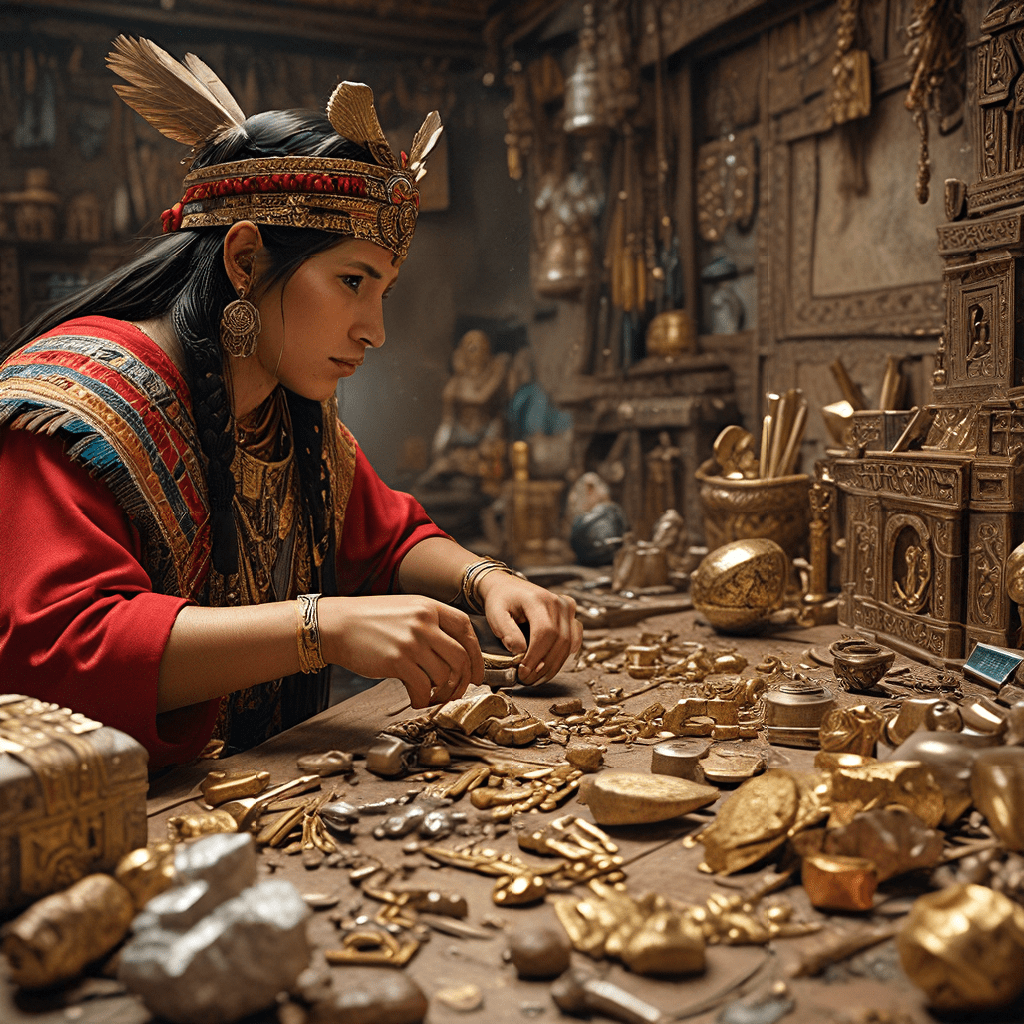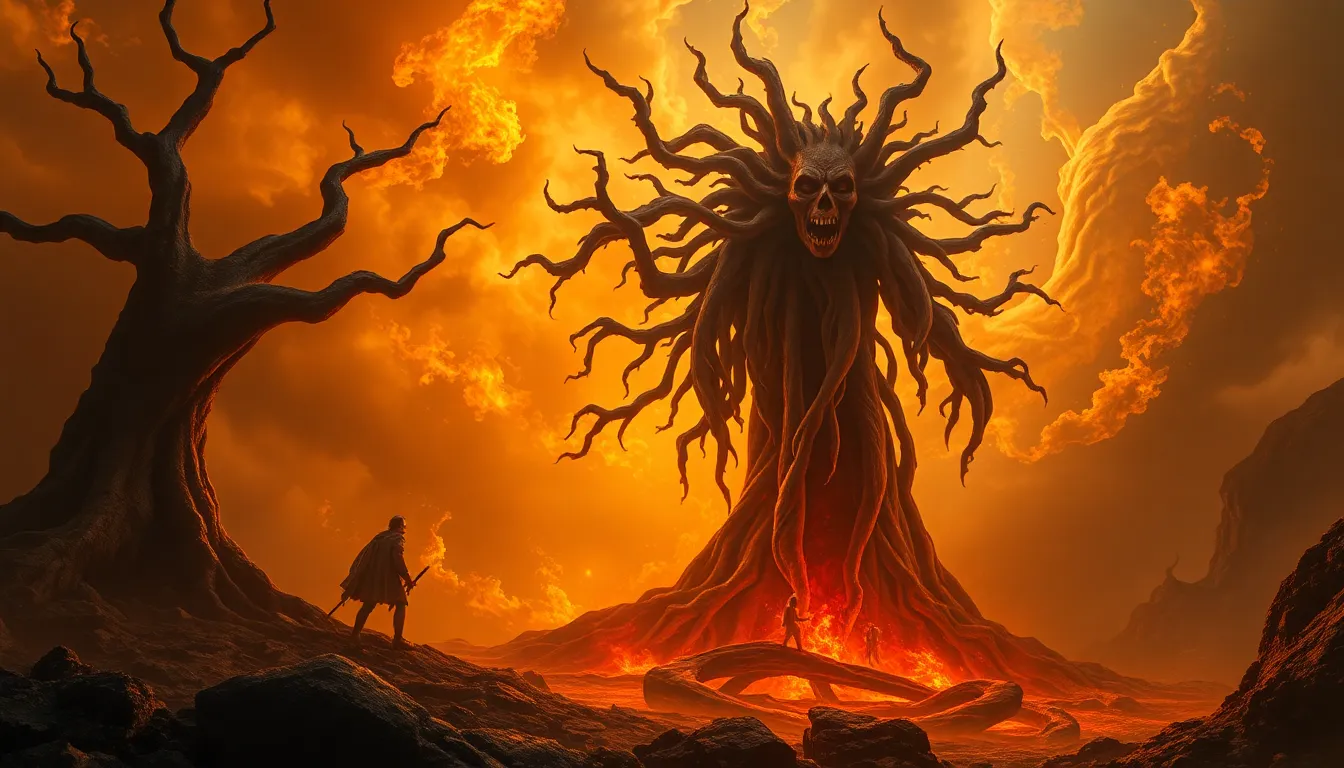The Myth of the Incan Goldsmiths: Crafters of Precious Objects
The Inca Empire, a civilization that flourished in the Andes Mountains of South America from the 13th to the 16th centuries, is often associated with an abundance of gold. Tales of the Incan goldsmiths and their exquisite creations have captivated imaginations for centuries. These stories are woven into the fabric of Incan history, but separating myth from reality is a challenging task.
The Legend of the Incan Gold: A Rich Tapestry of Myth and Reality
The legend of Incan gold is a powerful narrative that intertwines with the history of the empire's conquest by the Spanish in the 16th century. The Spanish conquistadors, driven by greed and a desire for wealth, were captivated by the tales of Incan riches. They believed the Incas possessed vast stores of gold, hidden in secret temples and palaces, waiting to be plundered.
The Incas themselves viewed gold as a symbol of the sun god, Inti, and used it in religious ceremonies and to adorn their temples and palaces. Incan goldsmiths were revered for their skills in working with precious metals, crafting intricate objects that reflected the empire's power, wealth, and spiritual beliefs.
The Golden Idol of the Sun: A Symbol of Divine Power
One of the most famous examples of Incan goldsmithing is the Golden Idol of the Sun, a massive statue crafted from pure gold. The statue was said to be the size of a man and adorned with precious gems. It was housed in the Temple of the Sun in Cuzco, the Incan capital, and served as a symbol of the Incas' divine connection to the sun. The Spanish conquistadors, after conquering Cuzco, melted down the Golden Idol and many other Incan treasures to create gold bars, which they shipped back to Spain.
The Myth of Lost Riches: A Powerful Narrative in Colonial Discourse
The myth of lost Incan riches, hidden in secret locations, grew in popularity during the colonial period. This myth was fueled by the Spanish desire to justify their conquest of the Incas and to legitimize their plunder of their treasures. Legends of hidden gold mines and lost cities filled with gold fueled expeditions and exploration in the Andes for centuries. However, despite the persistent stories, no definitive evidence of massive, hidden Incan gold has ever been found.
The Evidence of the Incan Art: Examining the Archaeological Findings
While the tales of lost Incan gold may be exaggerated, the archeological findings confirm that gold played a significant role in Incan society. Archaeologists have unearthed numerous examples of Incan goldsmithing, including jewelry, ornaments, ceremonial objects, and even gold plates used in religious rituals. These artifacts are testament to the skill and creativity of Incan goldsmiths.
Incan goldsmithing was characterized by intricate designs and detailed craftsmanship. Gold was often combined with other materials, such as silver, copper, and precious stones, creating complex and beautiful objects. These artifacts provide a glimpse into the Incan worldview, their religious beliefs, and their artistic sensibilities.
The Techniques of Incan Goldsmithing: Evidence of Skill and Innovation
The Incan goldsmiths were highly skilled craftspeople who developed innovative techniques for working with precious metals. They were particularly adept at using the lost-wax casting method, a complex process that allowed them to create intricate and detailed objects. In this method, a wax model of the desired object was created, then covered in a layer of clay. The clay mold was heated, melting the wax and leaving a hollow space. Molten gold was then poured into the mold, filling the space and taking the shape of the original wax model. Once cooled, the clay mold was broken off, revealing the finished golden object.
Incan goldsmiths also used a variety of other techniques, including hammering, soldering, and engraving. They were skilled at shaping and manipulating gold, creating finely crafted jewelry, ornaments, and ceremonial objects. Their goldwork was characterized by its precision, detail, and beauty.
The Role of Gold in Incan Society: Beyond mere ornament
While gold was certainly valued for its beauty and rarity, it held a deeper significance in Incan society. The Incas believed that gold was a sacred metal, representing the sun god, Inti. The sun was a central figure in Incan religion, representing life, fertility, and power. Gold, as a symbol of the sun, was used to adorn temples, palaces, and religious objects, highlighting the Incas' reverence for the divine.
Besides its religious significance, gold also served as a symbol of wealth and power. The Inca rulers used gold to display their authority and strength, gifting it to allies and using it to pay tribute to conquered peoples. The Incan nobility also wore gold jewelry and ornaments to signify their status and wealth.
Theories of Incan Goldsmithing: Exploring the Origins of Knowledge
The origins of Incan goldsmithing remain a subject of debate among scholars. Some believe that Incan goldsmiths developed their skills independently, based on their knowledge of local resources and techniques. Others suggest that Incan goldsmithing was influenced by other cultures, particularly the Chibcha of Colombia, who were renowned for their goldwork.
Evidence suggests that the Incas learned from earlier Andean cultures, who had a long tradition of working with precious metals. The Incas likely adopted and refined existing techniques, incorporating them into their own artistic traditions. They also developed new methods and techniques, further advancing the art of goldsmithing.
The Influence of Andean Metallurgy: A Legacy of Skilled Craftsmen
The Incas were part of a long and enduring tradition of metalworking in the Andes. The mountains were rich in mineral resources, including gold, copper, silver, and bronze. Andean cultures had been working with these metals for centuries, crafting tools, weapons, jewelry, and ceremonial objects. The Incas, with their political and economic power, were able to build upon this legacy, developing their own unique style of goldsmithing.
The Incan goldsmiths were not only skilled artisans but also innovators who pushed the boundaries of metalworking. They created objects of enduring beauty and cultural significance, leaving behind a legacy of artistry and craftsmanship that continues to inspire generations. They also influenced the development of metalworking techniques in other parts of South America. The legacy of Incan goldsmithing continues to inspire scholars and artists alike.
Unveiling the Truth Behind the Myth: A Critical Examination of Incan History
The myth of the Incan goldsmiths is a captivating story that has been passed down through generations. While the tales of boundless riches and hidden treasures may be exaggerated, they reflect the enduring fascination with Incan gold. They also highlight the important role that gold played in Incan society, both as a symbol of wealth and power, and as a sacred metal linked to their religious beliefs.
It is important to approach the myths and legends surrounding Incan goldsmithing with a critical eye. While the Spanish conquistadors may have been driven by greed, they did find significant amounts of gold in the Incan empire. The Incas, despite their advanced civilization, were ultimately conquered by a technologically superior force.
By separating myth from reality, we can gain a deeper understanding of Incan history and appreciate the artistry and craftsmanship of the Incan goldsmiths. Their work speaks to their ingenuity, their religious beliefs, and their place in the broader narrative of Andean history.
FAQ
1. Was there actually a lot of gold in the Incan empire?
While the stories of vast, hidden gold are likely exaggerated, the Incas did have a significant amount of gold. They used it for religious ceremonies, adornment, and displaying their wealth and power.
2. Why did the Spanish take so much gold from the Incas?
The Spanish conquistadors were motivated by greed and the desire for wealth. They saw the Incan gold as a valuable commodity that could be plundered and taken back to Spain.
3. Why is Incan gold so famous?
The Incan goldsmiths were renowned for their skill and artistry. They created intricate objects that reflected their beliefs and culture. The stories of Incan gold and the Spanish conquest have kept the myth of the Incan goldsmith alive for centuries.
4. What happened to all the Incan gold?
Much of the Incan gold was melted down and shipped to Spain. Some treasures were lost or hidden, and others are now in museums and private collections around the world.
5. Can you learn more about Incan history and goldsmithing?
You can learn more about Incan history and culture by visiting museums, reading books, and doing research online. Many resources are available for learning about the Incan Empire and their impressive artistic traditions.



